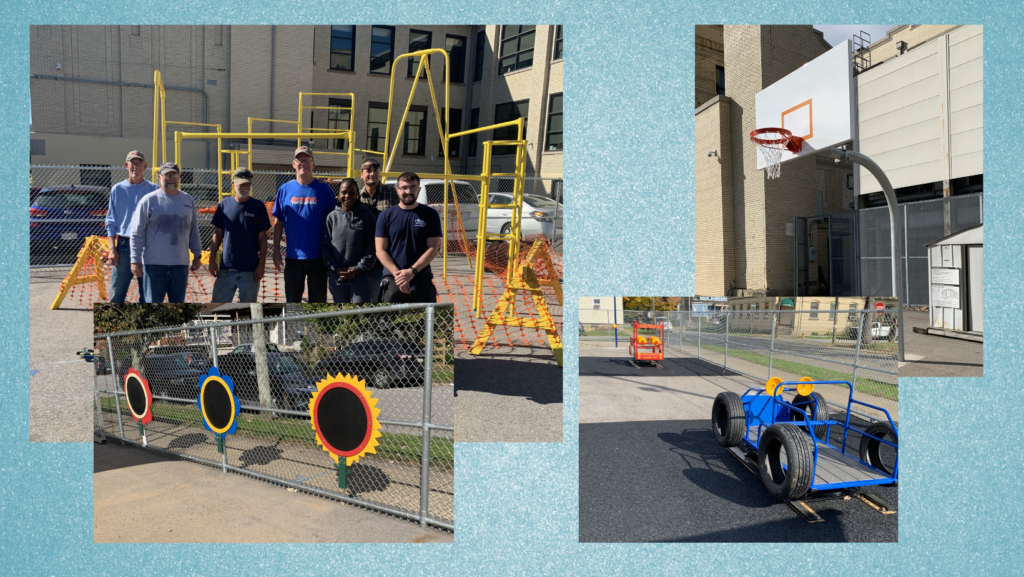School is back in full swing. Labor Day gives us the end of summer sunshine, leaving our white shirts locked away in the closet for another year. It also begins the long trek of our students from their classes to the relief of Thanksgiving break and tree stands. However, as students buckle down for another year of learning, not everyone is on equal footing.
There has been consistent research since the mid-90s that student performance drops after the summer. Scholastic highlights that these losses can amount to almost thirty percent of a student’s learning in each subject. The gap is attributed mainly to a lack of engagement with school subjects. “Use it or lose it,” in other words. Students from families with access to enrichment programs and learning resources experience a shallower slide, and, as with many things, money and circumstance make all the difference. The summer months do not just take away student achievement, they highlight the insecurity of communities overall.
The school year gives students access to the necessary resources to recover some of their lost academic progress, along with opening up reliable sources of food, socialization, and extracurricular activities. Still, gaps exist, and the needs of the students cannot be met simply by sitting in a classroom. Community must extend beyond the school desk, and churches can have a big part in providing access to that kind of community.
Rev. Mike Linger, Executive Director of House of the Carpenter in Wheeling, W.Va., and Rev. Neil Leftwich, District Superintendent of the Northern District, saw the potential that school-church partnerships could hold for community enrichment. I sat down with Rev. Leftwich to discuss this initiative and its origins. The idea began with a playground and blossomed into a network of equipping events across the conference.
“While we’re putting this playground together,” Rev. Leftwich said of a project he had been invited to at Madison Elementary, “Seeing kids stare out the windows at it, and hearing about the relationships that were developed between House of the Carpenter and the staff and students at Madison Elementary was just something that really touched me.” Leftwich and Linger set out that day to plan how make this relationship more commonplace. The solution was a program, spearheaded by Rev. Linger, to show churches what could be achieved by working with students and staff.

The Equipping Events consist of laity and clergy meeting to learn about the effects of poverty on children, the summer slide, and a variety of other troubles faced by students and their families. The event does not linger on these problems though, quickly moving to highlight the possibilities that exist between churches and the community. This is achieved in part through a supplemental book, The Mission-Minded Guide to Church and School Partnerships. This book does not give a one-size-fits-all approach for these partnerships but encourages cooperation and discussion.
“In no way did we want to have these gatherings and say, “This is what you need to do.” Part of it is to have people meet one another to say, ‘This congregation is doing this, maybe we can partner together and help.’”
Existing partnerships are celebrated through these events, but the focus is on expanding and creating ministries. No initiative is too small or too simple. Rev. Leftwich listed a variety of existing work – tutoring programs, “Grandma” programs, supply drives, teacher support – and named churches with only five members, as well as church partnerships combining the resources of multiple churches, parishes, or even districts to stretch out their arms even further. “Any size church can do something,” he said.
Connecting with Churches also provides a cross section of the communities we work and live in. Living into the Biblical mandate to love our neighbor requires us to engage with them directly, to know them by name, and to minister to the needs we know they have and not just speculate about. “One of the underlying motivations for all of this is the reality that congregations and churches need to step outside their walls. It is not an option, it is essential. If you are not sure where a need in the community is, you can probably find it in your local schools and offer support,” Leftwich said.
Revs. Leftwich and Linger are both available to discuss how school-church partnerships can be made. The Equipping Events are winding down for this season, but any parish or district that would like to have one can request a meeting. Likewise, the book The Mission-Minded Guide to Church and School Partnerships and an outline of the Equipping event are available upon request from the Northern District Office.
John Langenstein is a Licensed Local Pastor at North View United Methodist Church, Clarksburg, and a member of the Conference Communication Team.